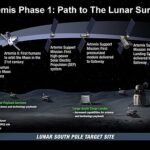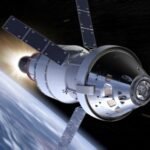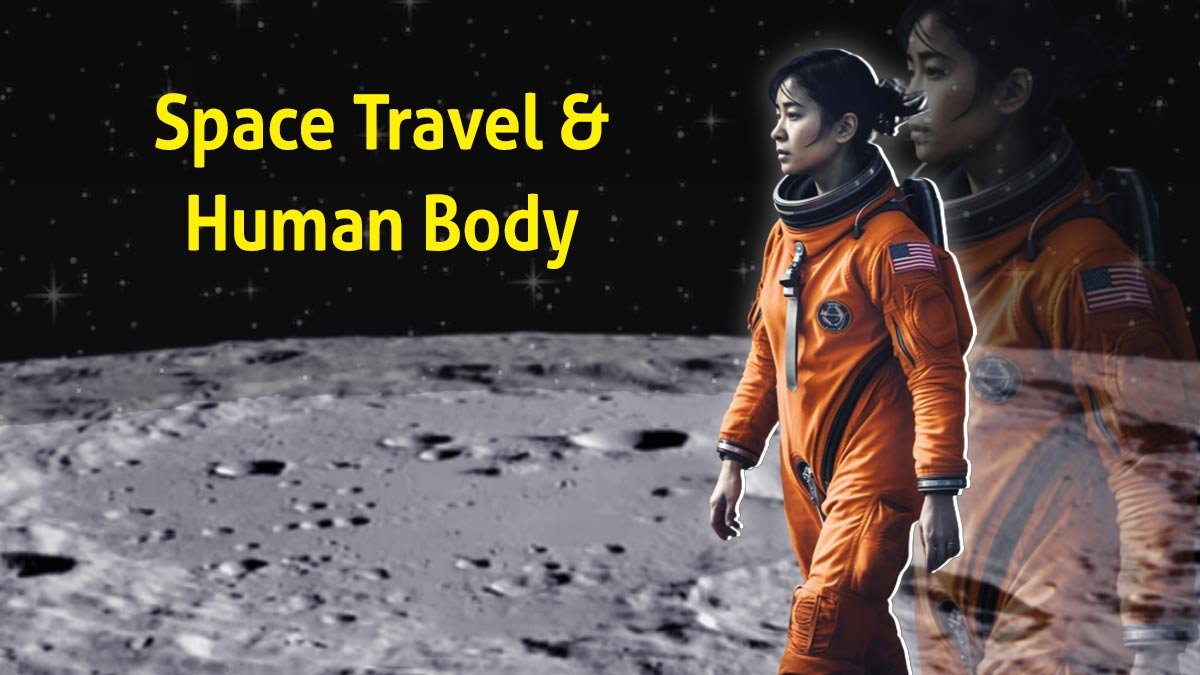Space exploration has always captivated humanity, from the first moon landing to the ambitious plans for Mars colonization. However, as we venture further into the cosmos, one critical question arises: What happens to the human body in space? The unique environment of space—characterized by microgravity, radiation, and isolation—poses significant challenges to human health. Understanding these effects is crucial for the future of long-term space travel and extraterrestrial habitation.
In this article, we’ll explore the science of space health, examining how the human body responds to the rigors of spaceflight. From bone density loss to psychological stress, we’ll delve into the physiological and psychological changes astronauts experience and the measures being taken to mitigate these effects.
The Unique Environment of Space
Space is an unforgiving environment, vastly different from Earth. Key factors that impact human health in space include:
- Microgravity: The near-absence of gravity alters how the body functions.
- Radiation: High levels of cosmic and solar radiation pose serious risks.
- Isolation and Confinement: Prolonged periods in confined spaces can affect mental health.
- Circadian Rhythm Disruption: The lack of a 24-hour day-night cycle disrupts sleep patterns.
Let’s break down how each of these factors affects the human body.
The Effects of Microgravity on the Human Body
Microgravity, or weightlessness, is one of the most defining features of space. While it may look fun to float around, it has profound effects on the human body.
1. Muscle Atrophy
On Earth, gravity constantly challenges our muscles, keeping them strong. In microgravity, muscles no longer need to work as hard, leading to muscle atrophy (wasting). Astronauts can lose up to 20% of their muscle mass on short-term missions, with even greater losses on longer trips.
- Countermeasures: Astronauts exercise for 2-3 hours daily using specialized equipment like treadmills and resistance devices to maintain muscle strength.
2. Bone Density Loss
Without gravity, bones begin to lose density at a rate of 1-2% per month, a condition similar to osteoporosis. This increases the risk of fractures during and after space missions.
- Countermeasures: Weight-bearing exercises and medications like bisphosphonates are used to slow bone loss.
3. Fluid Redistribution
In microgravity, bodily fluids shift upward, causing facial puffiness and leg shrinkage. This fluid shift can also increase pressure on the brain and eyes, leading to vision problems.
- Countermeasures: Lower body negative pressure devices help redistribute fluids and reduce intracranial pressure.
4. Cardiovascular Changes
The heart doesn’t have to work as hard in space, leading to cardiac deconditioning. Over time, this can reduce the heart’s efficiency and increase the risk of cardiovascular disease.
- Countermeasures: Regular aerobic exercise helps maintain cardiovascular health.
The Impact of Space Radiation
Earth’s atmosphere and magnetic field protect us from harmful radiation, but in space, astronauts are exposed to high levels of cosmic rays and solar particle events. This radiation poses significant health risks.
1. Increased Cancer Risk
Space radiation can damage DNA, increasing the risk of cancer. Prolonged exposure, such as on a mission to Mars, could be particularly dangerous.
- Countermeasures: Shielding materials and advanced monitoring systems are being developed to reduce radiation exposure.
2. Central Nervous System Effects
Radiation can also affect the brain, potentially leading to cognitive decline and neurological disorders.
- Countermeasures: Research is ongoing to understand and mitigate these effects.
3. Acute Radiation Sickness
High doses of radiation can cause symptoms like nausea, vomiting, and fatigue, similar to those experienced during cancer treatment.
- Countermeasures: Early detection and protective measures are critical.
Psychological and Behavioral Challenges
Space missions, especially long-duration ones, can take a toll on mental health. The isolation, confinement, and separation from loved ones can lead to psychological stress.
1. Isolation and Confinement
Living in a small space with the same people for months or years can lead to tension, irritability, and even conflict.
- Countermeasures: Crews are carefully selected for compatibility, and psychological support is provided.
2. Sleep Disruption
The lack of a natural day-night cycle can disrupt circadian rhythms, leading to sleep problems and fatigue.
- Countermeasures: Lighting systems that mimic natural light cycles help regulate sleep patterns.
3. Mental Health Risks
Astronauts may experience anxiety, depression, or feelings of loneliness.
- Countermeasures: Regular communication with family and mental health professionals is essential.
The Immune System in Space
The immune system is also affected by spaceflight. Studies have shown that astronauts are more susceptible to infections and may experience slower wound healing.
1. Weakened Immune Response
Microgravity and stress can suppress the immune system, making astronauts more vulnerable to illnesses.
- Countermeasures: Vaccinations and strict hygiene protocols help reduce the risk of infection.
2. Latent Virus Reactivation
Viruses like herpes can reactivate in space, posing additional health risks.
- Countermeasures: Antiviral medications and monitoring are used to manage these risks.
Long-Term Health Risks
The effects of spaceflight don’t end when astronauts return to Earth. Many face long-term health issues, including:
1. Vision Problems
Some astronauts experience spaceflight-associated neuro-ocular syndrome (SANS), which can cause blurred vision and structural changes in the eye.
2. Persistent Bone and Muscle Loss
Even with countermeasures, some bone and muscle loss may be irreversible.
3. Increased Cancer Risk
The cumulative effects of radiation exposure can increase the likelihood of developing cancer later in life.
Preparing for Future Missions
As we plan for longer missions to the Moon, Mars, and beyond, understanding and mitigating the effects of space on the human body is more important than ever.
1. Advanced Medical Technologies
Innovations like artificial gravity and gene therapy could revolutionize space health.
2. Improved Shielding
Better radiation shielding is essential for protecting astronauts on long-duration missions.
3. Psychological Support
Ensuring the mental well-being of astronauts will be critical for the success of future missions.
Conclusion: The Future of Space Health
The human body is remarkably adaptable, but space presents unique challenges that we are only beginning to understand. From muscle atrophy to radiation exposure, the effects of spaceflight are complex and multifaceted. However, with ongoing research and technological advancements, we are making strides in ensuring the health and safety of astronauts.
As we continue to push the boundaries of space exploration, the science of space health will play a pivotal role in enabling humanity to reach new frontiers. Whether it’s a mission to Mars or the establishment of a lunar base, understanding how the human body responds to space is essential for the future of exploration.






